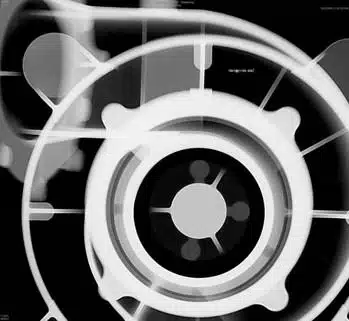
All products contain some degree of imperfection. Imperfections that don’t affect the functionality of a product are essentially cosmetic where others, if undetected, could result in a catastrophic failure. Nondestructive testing methods are commonly used with castings to detect irregularities that they may be assessed to a standard as defined on an engineering drawing.
For most foundry processes the commonly accepted standard for the nondestructive testing is SAE International specification AMS 2175. Although better known for delineating the frequency and inspection criteria for Radiography, Magnetic Particle and Penetrant Inspection, AMS 2175 also devotes substantial sections to quantifying the standards for Visual inspection.
AMS 2175 requires a 100% Visual examination of every casting and provides some allowance for the existence of various types of small non-propagating irregularities that can occur in the casting process. The criteria for Visual Inspection is delineated in AMS 2175 Section 3.4.1
Section 3.4.1 begins by stating that castings shall not contain certain types of linear defects, such as cracks, hot tears, cold shuts or negative parting lines. The specification also states that castings must also be clean of any foreign materials. Surface roughness is addressed as it pertains to conformance to drawing requirements. (See OFC Blog on the “Surface Texture of Investment Castings”).
The acceptance limits for Raised or Negative metal on Investment Castings, unless otherwise controlled by a drawing, is defined in section 3.4.1.4.2.
- Raised positive metal of under .015” is not limited and random raised metal is acceptable up to a maximum height of .030” for an area of .125 x .125” provided that they occur no more than one per square inch.
- Negative surface pits are of less than .030” deep may be present and random pits up to Ø.060 diameter and .030 deep if not more than one per square inch.
AMS 2175 also states that a rejectable discontinuity, which will be subsequently removed by machining or that can be removed by blending within the dimensional tolerance, will not be cause for rejection.
In section 8.3 the specification elaborates on Observational Standards. An observational standard is an agreement between buyer and seller to a standard, such as a sample part that serves as a visual acceptance criteria. The establishment of Observational Standards is fairly common with castings.
AMS 2175 is a very successful specification with a decades long lineage. The specification provides the clear definition of casting NDT requirements that allow Engineers to design with confidence, Foundries to manufacture with predictable yields and Inspectors to discern what is acceptable from that which isn’t.
